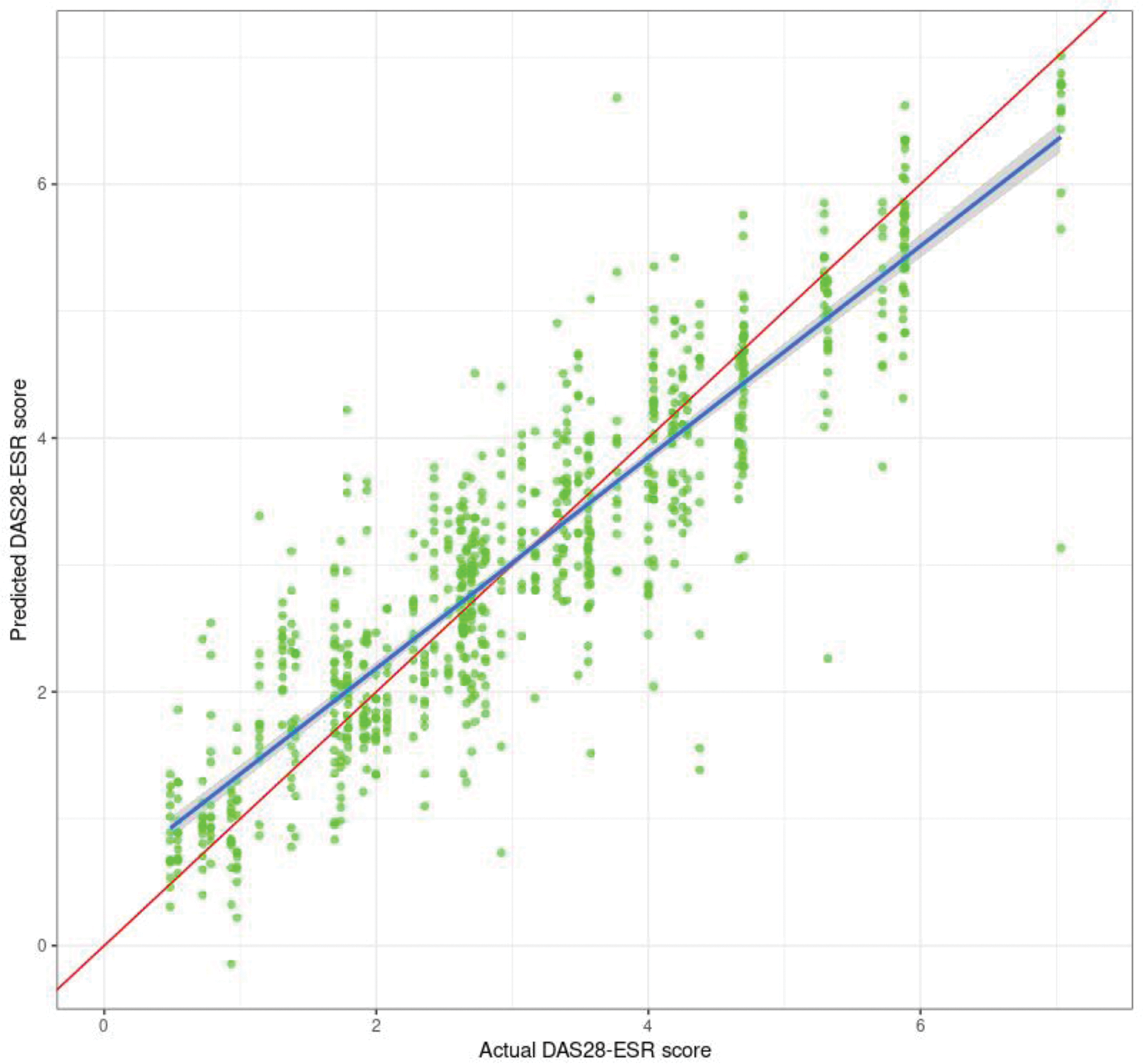

Background: Autoimmune inflammatory rheumatic diseases (AIIRD) are usually life-lasting, and follow-up may require a lot of resources. Digital consultation is proposed to reduce resource use in patients in remission or with a stable disease [1]. Despite its limitations, patient-reported outcomes (PROMs) are a valuable tool for digital consultation [2]. However, there are no instruments that can substitute for physical examination. The study is a proof-of-concept with the primary goal of assessing if accelerometer signal analysis can measure disease activity in arthritides and be useful in follow-up of AIIRD patients.
Objectives: This work is an interim analysis of a study using accelerometer (ACC) data in the follow-up of patients with AIIRD. We assessed the efficacy of DAS28-ESR prediction from a single accelerometer signal.
Methods: Twenty-one patients with arthritis were included. Of those, 4 with psoriasis arthritis, and the rest with rheumatoid arthritis. We used the analysis of accelerometery signal registered in 3 minutes of walking, slowly walking, clapping, sitting and standing. Data was divided into 3-second chunks (samples). Fifty-four different numerical features were extracted. Among the features are Fourier’s components, autoregression coefficients, median absolute deviation (MAD), variance, Fourier’s entropy, etc. Samples were divided into training and testing datasets. The data model was built using Bayesian Regularized Neural Networks algorithm. The efficacy of prediction was tested using a testing dataset. We used the root mean square error (RMSE) with 95%CI as a primary performance parameter. We analysed classification of DAS28-ESR remission effectiveness, based on predicted DAS28-ESR values. Accuracy with 95%CI was used as the classification quality criterion. All analyses were conducted with R version 4.3.2 using “caret” and “brnn” packages.
Results: We made predictions from the testing dataset using the built model, which was reasonably accurate in estimating the DAS28-ESR score. RMSE was 0.67, 95% CI 0.64-0.71. Detailed result of estimation is shown on the Figure 1. There was a good correlation between the actual and predicted DAS28-ESR; however, there were some outlier estimations. DAS28-ESR remission was detected with 0.87 accuracy (95%CI 0.85-0.89, sensitivity 0.91, specificity 0.81).
Conclusion: Accelerometery using a single device can adequately estimate numerical activity scores in AIIRD patients. Our work has several limitations, mainly due to small number of patients, which can potentially lead to overfitting. However, further studies with larger patient groups may allow better model tunning and, as a result, may give better activity score prediction.
Result of DAS28-ESR estimation on the test dataset. The X-axis represents the actual DAS28-ESR and the Y-axis the estimated DAS28-ESR. Each point represents the result of one sample. The red oblique line shows ideal fitting. The blue one shows the mean of estimated values. Light blue shadows represent standard error.

REFERENCES: [1] Hamann P, Knitza J, Kuhn S, Knevel R. Recommendation to implementation of remote patient monitoring in rheumatology: lessons learned and barriers to take. RMD Open. 2023;9: e003363. doi:10.1136/rmdopen-2023-003363.
[2] Muehlensiepen F, May S, Hadaschik K, Vuillerme N, Heinze M, Grahammer M, et al. Digitally supported shared decision-making and treat-to-target in rheumatology: a qualitative study embedded in a multicenter randomized controlled trial. Rheumatol Int. 2023;43: 695–703. doi:10.1007/s00296-022-05224-y.
Acknowledgements: NIL.
Disclosure of Interests: None declared.